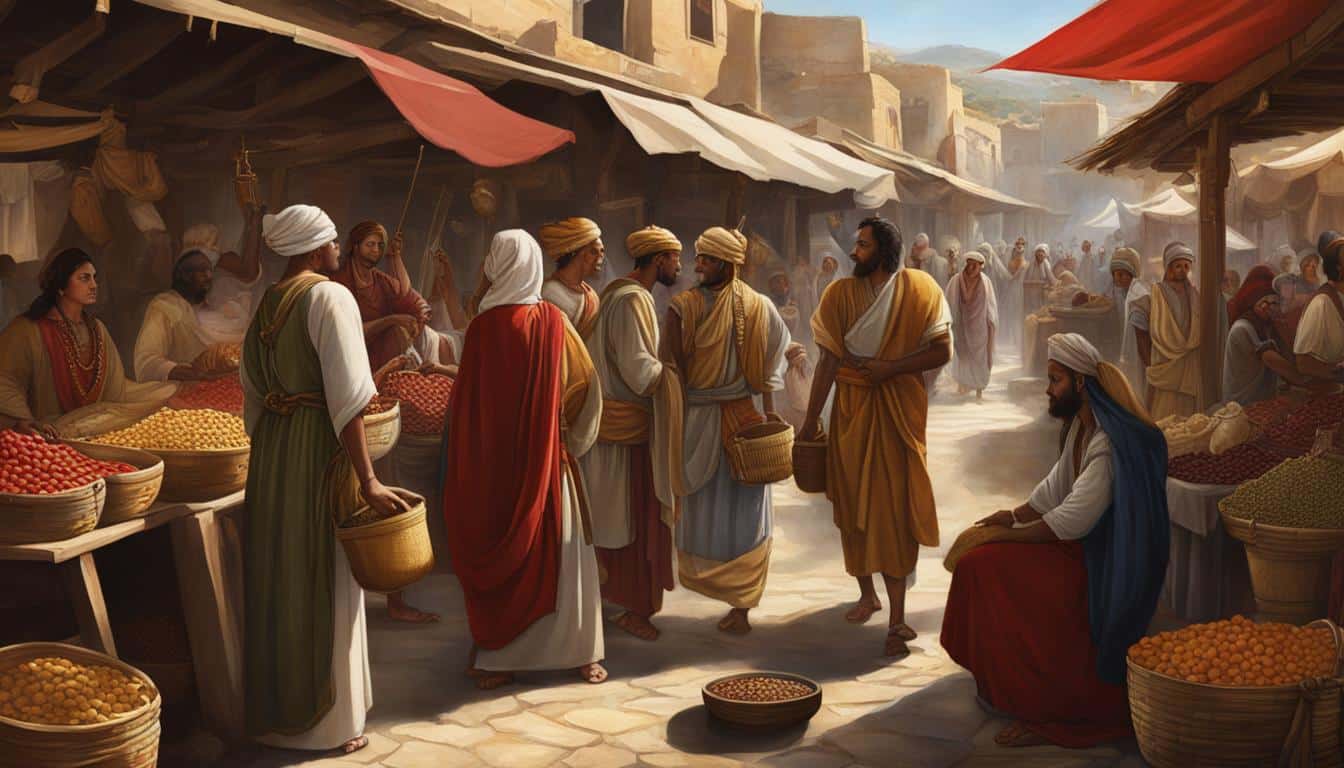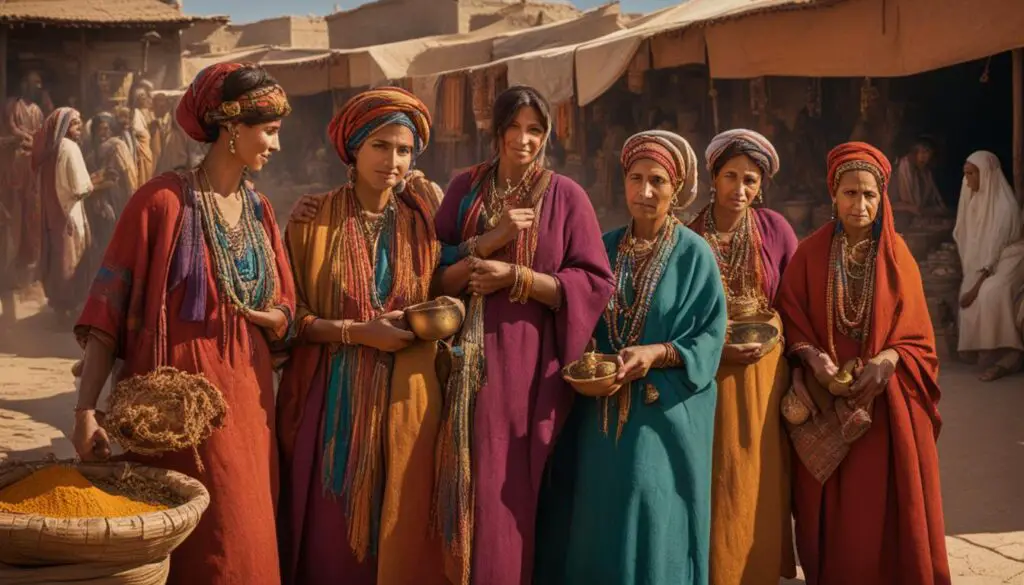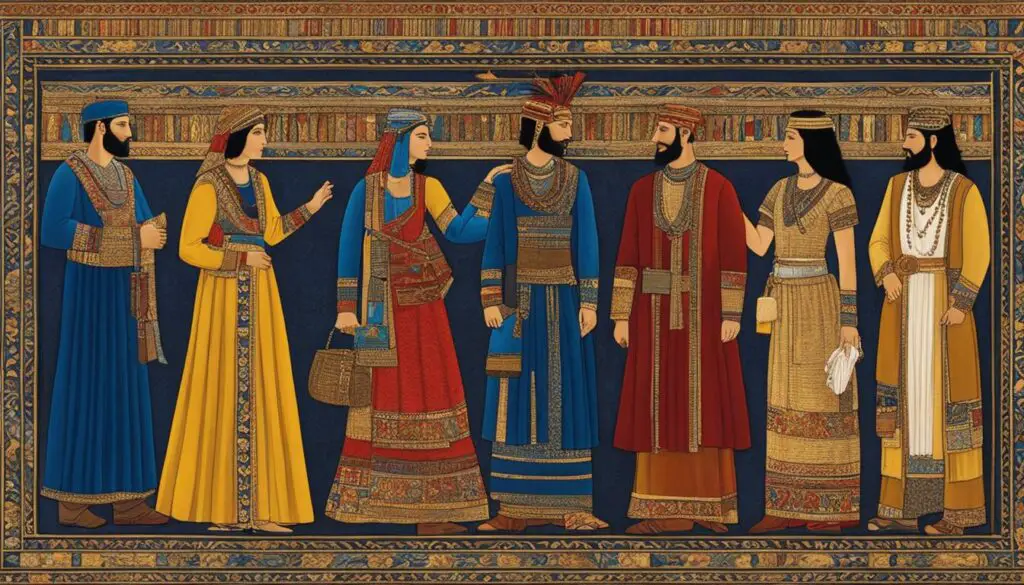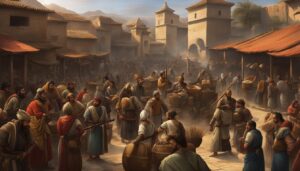
The deeper I go into the Bible, the more I notice how often garments appear in key moments — a robe torn in grief, a cloak passed on in blessing, a veil lifted in love or removed in shame. Clothing in ancient biblical times wasn’t just functional; it was prophetic, symbolic, and often sacred. As someone who journals visually through scripture, I’ve found that paying attention to what people wore brings new dimension to the stories. In this post, I’ll explore how garments spoke volumes in biblical narratives — sometimes more than the words themselves.
Key Takeaways:
- Ancient biblical fashion was influenced by religious teachings and cultural norms.
- Men and women’s garments in ancient biblical times were quite similar, with slight variations in decorative elements.
- The materials used for clothing included wool, linen, animal skins, and silk.
- The distinction between men’s and women’s apparel was important, but the cultural context and historical significance should also be considered.
- Studying clothing and fashion trends in ancient biblical times provides insights into the historical and cultural aspects of that era.
Hebrew Clothing in the Holy Bible
In the Holy Bible, there are descriptions of clothing styles among the Hebrew people, offering insights into ancient Hebrew fashion. Throughout the events that take place in ancient Israel, the clothing mentioned can be considered representative of ancient Hebrew clothing. The materials used for clothing during biblical times included wool, linen, animal skins, and silk. Men and women in ancient Israel mainly wore tunics, undergarments, and outer garments.
One of the earliest and most basic clothing items in Hebrew culture was the ‘ezor or ḥagor, an apron-like garment worn around the hips or loins. Made from animal skins, it was worn next to the skin. The kethōneth, an under-tunic, was a more advanced clothing item worn by both men and women. It could be sleeveless or have sleeves and served as the main garment for Israelites. Additionally, both men and women commonly wore outer garments like the simlāh, a heavy shawl made of rough woolen material.
Tables presenting the specific details of Hebrew clothing styles and materials would provide a visual representation of the fashion trends and preferences of the ancient Israelites, contributing to a better understanding of their historical and cultural significance.

Clothing in the Holy Bible: Key Details
Below is a table summarizing the key elements of Hebrew clothing as described in the Holy Bible:
| Garment | Description |
|---|---|
| ‘Ezor or Ḥagor | An apron-like garment worn around the hips or loins. Made from animal skins and worn next to the skin. |
| Kethōneth | An under-tunic worn by both men and women. It could be sleeveless or have sleeves and served as the main garment for Israelites. |
| Simlāh | A heavy shawl made of rough woolen material, commonly worn as an outer garment by both men and women. |
“Clothing in the Holy Bible provides valuable insights into the historical and cultural aspects of ancient Hebrew dress styles. The specific details described in the scriptures enhance our understanding of fashion trends in biblical times.”
The study of Hebrew clothing in the Holy Bible enables us to navigate and interpret ancient fashion trends and preferences, shedding light on the historical and cultural significance of clothing in biblical times.
Mesopotamian Fashion and Dress in Ancient Times
Mesopotamia, specifically Sumer, is recognized as the first region in the world to record the development of clothing and accessories through its art. The fashion in Mesopotamia evolved from simple loincloths to more complex styles over time. In the prehistoric era, men and women likely wore basic articles of clothing made from plants. As civilization developed, clothing became more elaborate, and textiles made from domesticated animals, particularly wool, became the most common material.
Mesopotamian art and architecture provide evidence of the progression from simple to more complex fashion styles. The clothing and accessories worn by both men and women in Mesopotamia symbolized social status and profession. Fashionable garments included loincloths, kilts, tunics, and robes of varying lengths. Both men and women wore jewelry, headdresses, and footwear such as sandals or boots.
Mesopotamian fashion trends influenced later cultures and provide important insights into ancient dress styles. The intricate and detailed artwork found in Mesopotamian artifacts and reliefs allows us to visualize the different garments and adornments worn by the people of that time. By studying these visuals, we can gain a deeper understanding of the fashion choices, societal values, and cultural influences that shaped Mesopotamian dress styles.

Table: Mesopotamian Clothing and Accessories
| Garments | Materials | Styles |
|---|---|---|
| Loincloths | Plant fibers | Simple, minimal coverage |
| Kilts | Wool, linen | Wraparound skirt-like garments |
| Tunics | Wool, linen | Long, loose-fitting garments worn over undergarments |
| Robes | Wool, linen | Flowing garments of varying lengths |
| Jewelry | Gold, silver, precious stones | Necklaces, bracelets, earrings, rings |
| Headdresses | Wool, linen, feathers | Turbans, headbands, crowns |
| Footwear | Leather | Sandals, boots |
The table above provides an overview of the different garments, materials, and styles prevalent in Mesopotamian fashion. It highlights the range of options available to both men and women, showcasing the diversity within Mesopotamian dress styles.
Conclusion
Clothing and fashion in biblical times offer valuable insights into the historical and cultural aspects of that era. The rules and expectations surrounding clothing were influenced by religious teachings and cultural norms, emphasizing the importance of social status and identity. While men and women in ancient times wore similar garments, slight variations in decorative elements and lengths existed.
The materials used for clothing during biblical times included wool, linen, animal skins, and silk, showcasing the rudimentary ancient clothing industry. These materials were skillfully transformed into various garments such as tunics, undergarments, outer garments, and robes of different lengths. The clothing choices made by individuals in biblical times were not only a matter of personal preference but also served as a reflection of their social standing.
Studying the fashion trends of ancient biblical times also allows us to explore the historical significance of these clothing guidelines. From the simple loincloths of the prehistoric era to more elaborate styles that symbolized social status and profession, the evolution of fashion in biblical times paved the way for future clothing trends. It is through these ancient fashion trends that we can understand the development and progression of clothing throughout history.
FAQ
What were the materials used for clothing in ancient biblical times?
The materials used for clothing in ancient biblical times included wool, linen, animal skins, and silk.
What were the main garments worn by men and women in ancient Hebrew culture?
The main garments worn by men and women in ancient Hebrew culture were tunics, undergarments, and outer garments like the simlāh.
Did men and women in ancient biblical times wear similar clothing?
Yes, men and women in ancient biblical times wore similar garments, with slight variations in decorative elements and lengths.
How did Mesopotamian fashion evolve over time?
Mesopotamian fashion evolved from simple loincloths to more complex styles over time. Textiles made from wool became the most common material, and garments included loincloths, kilts, tunics, and robes of varying lengths.
Did clothing in ancient biblical times have any religious or cultural significance?
Yes, clothing and fashion in ancient biblical times played a significant role in defining social status and identity. The rules and expectations surrounding clothing were influenced by religious teachings and cultural norms.
Source Links
- https://en.wikipedia.org/wiki/Biblical_clothing
- https://www.worldhistory.org/article/2198/fashion–dress-in-ancient-mesopotamia/
- https://dividetheword.blog/2017/03/07/men-womens-apparel-in-ancient-days-and-today/
In our modern world of fast fashion and trends, it’s easy to overlook the significance of what we wear. But in ancient scripture, clothing could represent calling, mourning, joy, or transformation. When you next read about a tunic or a sash in the Bible, pause and wonder: what message is hidden in the fabric? For those of us who journal through the Word, even the smallest detail can hold deep meaning.








